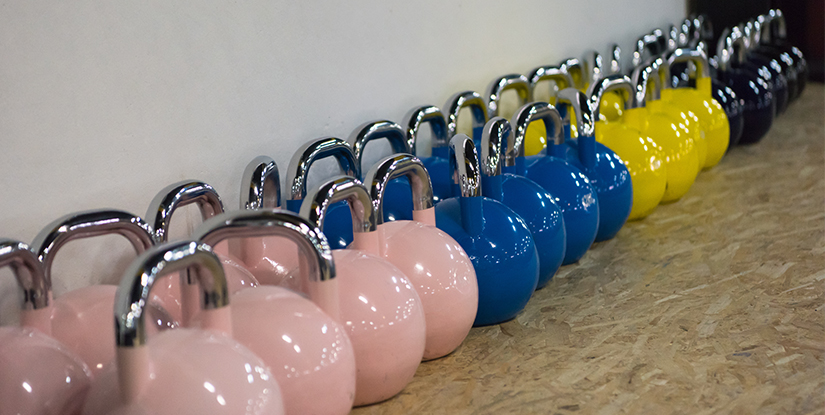Strength Training Accessories Guide | Improve Performance & Prevent Injury

Strength Training Accessories: Essential Tools to Boost Performance and Prevent Injury
Accessories are the unsung partners of an effective strength training program. While barbells, dumbbells and machines form the foundation, the right accessories improve grip, stabilize joints, enhance technique, and protect against injury. This guide covers the most practical, evidence-informed accessories for athletes, coaches, and serious gym-goers who want to get stronger, safer, and more consistent.
Why accessories matter
Accessories provide functional support that lets you train heavier, recover faster, and reduce the risk of chronic issues. A weight belt increases intra-abdominal pressure for safer heavy lifts. Wrist wraps and knee sleeves stabilize vulnerable joints during compound movements. Resistance bands offer variable tension that complements progressive overload. Smart accessory use improves training quality without masking technical deficiencies.
Core categories and recommended uses
- Belts: Use for heavy squats, deadlifts and overhead lifts to enhance core stability. Choose a lever or buckle belt with 10–13 mm thickness for powerlifting-style support.
- Wrist wraps: Support the wrist joint during pressing movements like bench press and overhead press. Short wraps (12–18 inches) for light support; longer wraps (24–36 inches) for heavy loading.
- Lifting straps and grips: Use straps for heavy pulling when grip strength limits progress; reserve for final sets to avoid hampering grip development. Chalk and grip pads reduce slippage in high-volume pulling work.
- Knee sleeves and wraps: Provide compression and warmth to improve joint proprioception. Sleeves (5–7 mm) are ideal for general support; wraps for competitive lifting where maximal rebound is needed.
- Resistance bands: Versatile for warm-ups, mobility, progressive overload and accommodating resistance. Use bands to reinforce lockout strength or assist bodyweight pull-ups.
- Lifting shoes: Stable, low-heeled shoes improve force transfer in squats and Olympic lifts. Prioritize a flat, non-compressible sole and secure fit.
- Barbell collars and safety clips: Prevent plate movement and reduce imbalance during dynamic lifts.
- Flooring and mats: Protect equipment, reduce vibration, and provide a consistent platform for lifts.
Selecting accessories: practical criteria
- Purpose-driven choice: Match the accessory to a clear training need (e.g., belt for near-maximal loads, knee sleeves for joint comfort).
- Quality materials: Look for reinforced stitching, durable leather or nylon, and reliable closures (Velcro, buckles, levers).
- Fit and sizing: Proper fit ensures effectiveness—measure hips for belts, circumference for sleeves, and shoe sizing for lifting footwear.
- Longevity vs cost: Invest in durable items for heavy daily use; budget options can suffice for casual lifters.
- Regulatory compliance: Competitive athletes should verify equipment meets federation rules.
Integrating accessories into programming
Accessories should enhance, not replace, sound technique and progressive programming. Use supportive gear for top sets, maximal efforts, or when rehabilitating an injury. Reserve assistance tools like lifting straps for finishing sets to encourage grip development. Incorporate mobility bands and sleeves into warm-ups to increase readiness and reduce injury risk. Track when and why you use each accessory to avoid dependency that reduces raw capacity.
Care and maintenance
- Clean textile accessories regularly and air leather goods to prevent odor and deterioration.
- Inspect stitching, buckles and Velcro routinely; replace worn items to maintain safety.
- Store accessories in a dry environment and avoid prolonged sun exposure to prevent material breakdown.
Buying checklist
- Define primary use and training frequency.
- Confirm sizing with manufacturer charts and customer reviews.
- Prefer warranties or clear return policies for high-cost items.
- Compare materials and construction rather than brand name alone.
Conclusion
Well-chosen strength training accessories extend your training capacity, protect joints, and refine performance. Prioritize accessories that solve specific problems, fit correctly, and are used strategically within a structured program. When combined with consistent technique work and progressive overload, accessories become multipliers of strength and resilience rather than crutches.
FAQs
Q1: Do I need a weight belt for all lifts?
A1: No. Use a belt mainly for near-maximal squats, deadlifts and overhead presses to increase intra-abdominal pressure and stability.
Q2: Should beginners wear wrist wraps?
A2: Beginners rarely need wraps; focus first on technique and wrist mobility. Introduce wraps when you consistently lift heavy loads that strain the wrist.
Q3: How often should I replace knee sleeves?
A3: Replace knee sleeves when compression or stitching degrades—typically every 12–24 months with regular use.
Q4: Are lifting shoes necessary?
A4: They are highly beneficial for squats and Olympic lifts due to enhanced stability and force transfer, though not essential for casual lifters.
Q5: Can straps harm grip strength?
A5: Overuse can limit grip development. Use straps selectively for heavy top sets or back-off sets, not every pulling set.
Q6: What resistance bands should I buy?
A6: Get a set with multiple tensions (light to heavy) for warm-ups, mobility and progressive resistance work.
Q7: Is chalk allowed in most gyms?
A7: Chalk policies vary; many gyms restrict loose chalk due to cleanliness. Consider liquid chalk if regular chalk is prohibited.
Q8: How do I choose the right belt thickness?
A8: For powerlifting-style support, choose 10–13 mm thickness. Thinner belts (6–10 mm) offer support with slightly more flexibility.
Q9: Can accessories prevent all injuries?
A9: No. Accessories reduce risk and support recovery but cannot replace proper programming, technique, and progressive loading.

